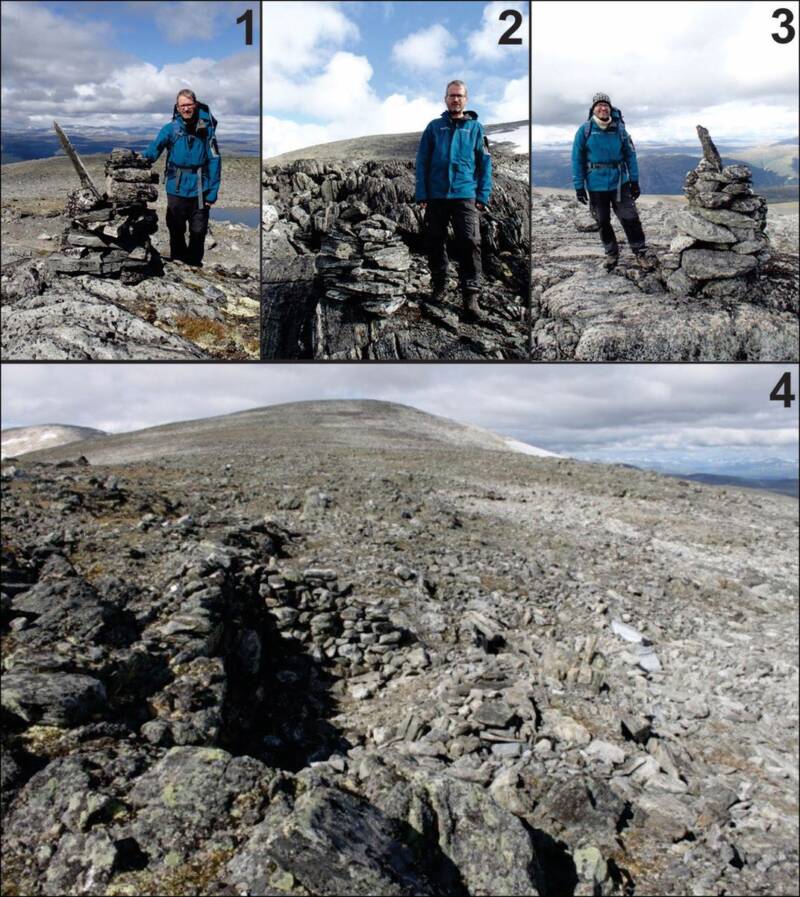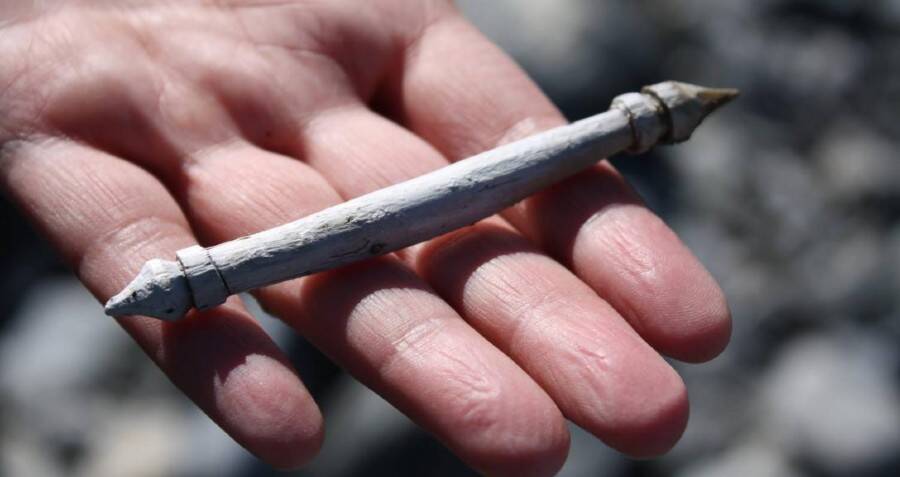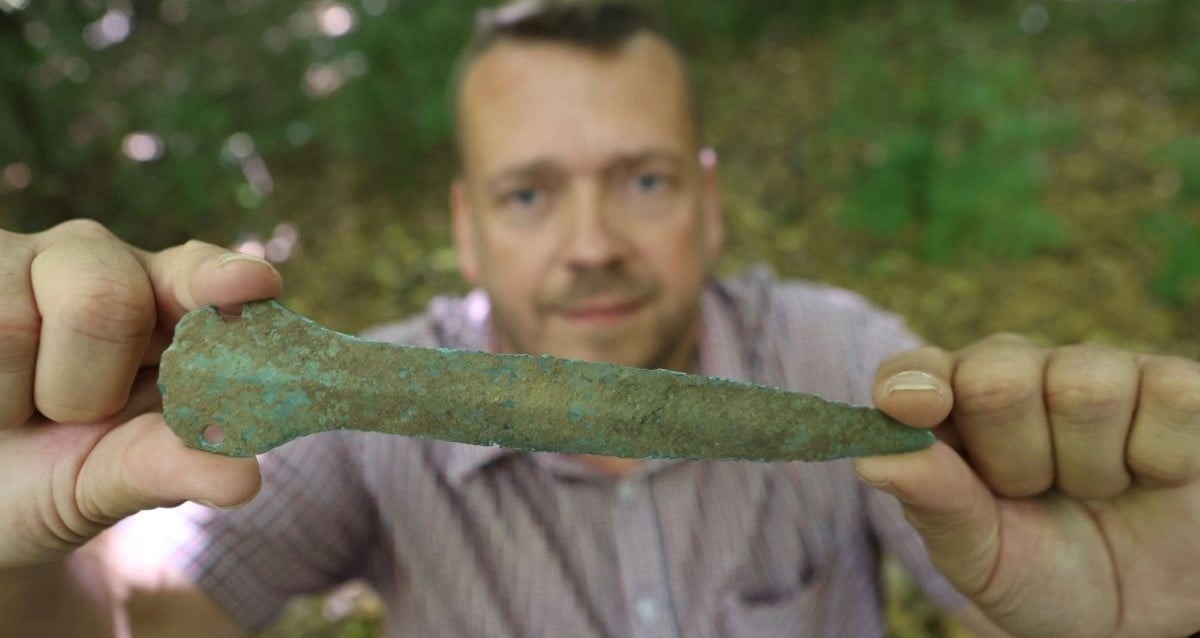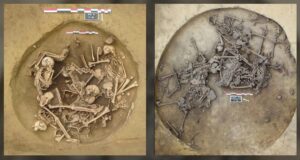Hidden Viking Treasures Emerge as Norway’s Ice Surrenders Secrets After Centuries
“A lost mountain pass melting out of the ice is a dream discovery for us glacial archaeologists,” Pilø said.
“The preservation of the objects emerging from the ice is just stunning,” said Espen Finstad, co-author and co-director of the Glacier Archaeology program. “It is like they were lost a short time ago, not centuries or millennia ago.”

Antiquity JournalLars Pilø with the ruins of a cairn along the Lendbreen trail.
“This pass was at its busiest during the Viking Age around 1000 A.D., a time of high mobility and growing trade across Scandinavia and Europe,” said co-author and archaeologist at the University of Cambridge, James Barrett.
“This remarkable peak in use shows just how connected even a very remote location was to wider economic and demographic happenings,” added Barrett.
To his point, this new evidence heavily indicates that a lost Viking trade route has been right under our noses for centuries — one where everything from reindeer antlers to butter was traded and transported to markets all over Europe.
“The Viking Age is one of small-scale globalization: They’re sourcing raw materials from all over,” explained Søren Michael Sindbæk, archaeologist at Aarhus University in Denmark. “This is the first site where we have good chronology and the finds illustrate that.”
Pilø explained that the Lendbreen route even contained the ruins of a shelter and that the scarcity of finds in other passes suggests this was likely the most trafficked of them all. He and his peers believe it was also used to travel from permanent farms in the valleys to summer farms above the ridge.














Post Comment